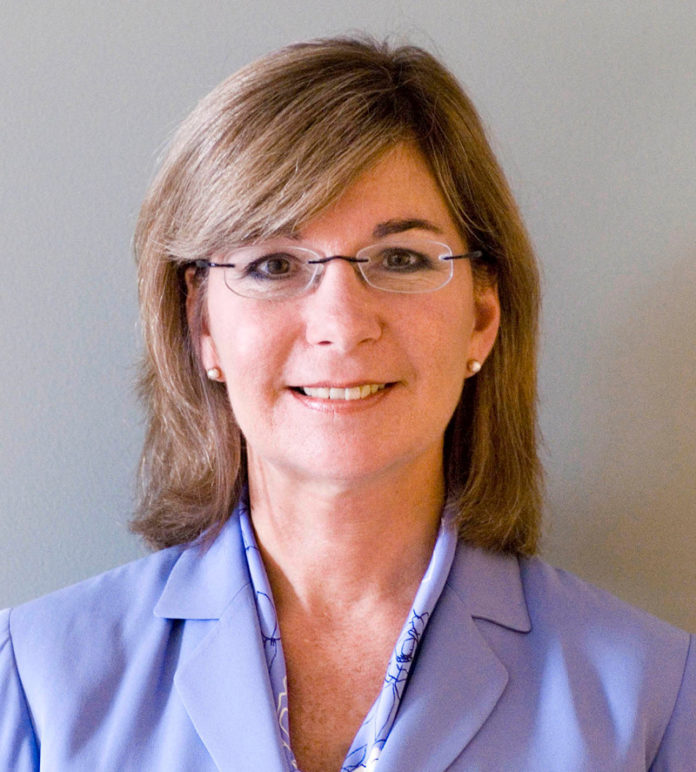
Seventy-five years ago last month, The Great New England Hurricane, or the Hurricane of ’38, altered the southern New England coastline and perception of the region’s vulnerability to severe weather. Since then, meteorologists have made huge advances in hurricane forecasting unimagined in the 1930s, while communities have built storm barriers and coastal fortifications. But we’re still vulnerable. Karen Clark, whose consulting firm advises businesses and insurance companies on catastrophe risk and modeling, has developed new tools for estimating the losses that will occur from different storm tracks. She recently released a report on what we could expect if a storm like the Hurricane of 1938 landed in New England today and discusses that and other unpleasant scenarios.
PBN: Why did you decide to look back at the Hurricane of 1938?
CLARK: Well, the 75th anniversary and to illustrate what the losses would be if a similar storm happens today. The report illustrates why our technology is more insightful than the catastrophe models. Models were never designed to do this, but what has happened over the last decade is companies are very focused on the 1 percent probable maximum loss number. Ratings agencies and regulators will look at this one number and peg lots of stuff to that, like a company’s capital requirements. It is a little bit crazy because this number is highly uncertain.
PBN: We have a lot more buildings along the coast now than in 1938, but we also have better defenses, such as the hurricane barriers here in Providence and New Bedford. Are we more vulnerable to extreme losses from a similar hurricane than we were 75 years ago?
CLARK: You have to separate wind damage from flood damage, because insurance companies are covering wind damage. For wind we would have a lot more exposure than we would have in 1938 because there are a lot more buildings and they would cost a lot more. We calculated if we took the footprint of the 1938 storm, there is more than $13 trillion in property value in the footprint. We have an enormous built-up residential, commercial infrastructure that is going to have wind damage. Those aren’t going to be protected by the hurricane barriers. Now if we look at the flood damage, the most important thing is most of the flooding damage is not going to be insured.
CLARK: The estimated damage for that identical track, the wind damage is $35 billion of insured loss and that means the economic toll is at least double with flooding, around $100 billion in round numbers.
PBN: And what did the Hurricane of 1938 cost back then?
CLARK: The estimated total economic toll was around $600 million.
PBN: And is the 1938 track as bad as it gets or could another track be worse? PBN: So if you had a stronger storm with a track like Sandy it would be that bad scenario? PBN: So what is the probability we are going to have another Hurricane of 1938 or something worse? INTERVIEW
CLARK: It could be a lot worse. If you had a storm of the intensity of ‘38, but more like the track of Irene, losses would be three times. The reason is because storms are right-handed. You can see from pictures as you move a track to the west, you get more high wind speeds over populated areas and more damage. That is why one of the messages we have been trying to give is it is not all about storm intensity. It only takes a Category 3 to cause much higher losses than Katrina or anything we have seen to date. A western-most track is [more than] $100 billion insured losses and uninsured [more than] $200 billion.
CLARK: Absolutely, Sandy’s track was unusual. Taking that left turn toward New Jersey with the cold front coming down is unusual and is less likely to happen than the Great New England Hurricane. I hate to talk about worse-case scenarios, but if you had one with a track between the Hurricane of «constant ****SSLq»38 and Sandy, for New York and all that property value – that would be the worst track along with a strong intensity.
CLARK: That is what the new methodology is designed to help answer. Nobody can pinpoint the probability of everything, because there is very little data. But when we look at the data, historically speaking this type of event is about a one-in-100-year occurrence. Researchers have come up with similar storms in the 1800s, a big one in 1635. The question is where is it going to make landfall. We don’t try to predict that because we can’t predict that; there’s not enough data. But what we create is a chart where there is a storm every 10 miles – at every 10 miles there is a landfall point. What we say to clients is even though we don’t know which landfall the storm is going to take, here would be your losses if it takes that track.
So you see the industry loses from about $130 billion down to $10 billion if it hits just Nantucket. If you are managing an insurance company you need to be prepared for all those scenarios. We are only talking about a Category 3 for all of these tracks. Everyone wants to debate if we could have a Category 4 or 5, but no one is going to debate that we can have a Category 3. •
Karen Clark
POSITION: President and CEO of Karen Clark & Co.
BACKGROUND: Clark began working on computer models for an insurance company straight out of graduate school, but quickly became fascinated with the impact of catastrophic storms. She founded a company, AIR Worldwide, in 1987, sold it, then founded her own current consulting firm in 2007.
EDUCATION: Bachelor’s in economics from Western Maryland College (now McDaniel College) in 1979; Dual MBA and master’s in economics from Boston University in 1982
FIRST JOB: Behind the counter at fast-food chain Hardees
RESIDENCE: Weston, Mass.
AGE: 56












